The old walled city is unique in Southeast Asia, in that it is devoid of backpacker cafes, tourist hotels, and travel agencies. Instead, you’ll find elegant, tree-lined streets, a vibrant street food scene, and a wealth of glorious historical buildings and charming ancient houses.
Hue Citadel (Forbidden Purple City)
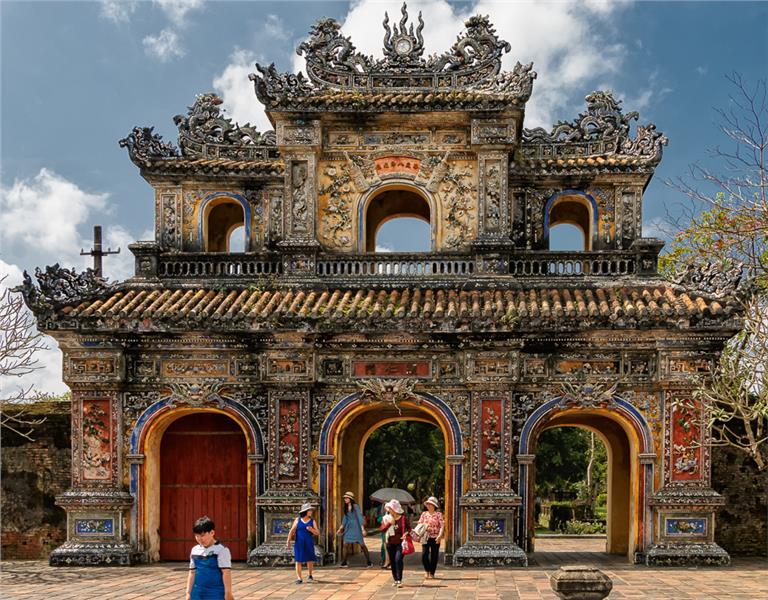
The most historically significant attraction in Hue. Sadly, much of the original construction in the Citadel had been destroyed during the Vietnam War. As a result, some areas are now only empty fields, bits of walls, and an explanatory plaque. Entrance to the Imperial Citadel costs 150,000 Dong. Allow several hours to see it properly. it is open 06:30-17:00. Inside you can pay $1.50 (75,000dong) to dress up in the King or Queen's clothing and sit on the throne for a fun photo opportunity. The main southern entrance to the city, built in 1833 by Minh Mang. The central door and the bridge connecting to it were reserved exclusively for the emperor. Climb up to the second floor for a nice view of the exquisite courtyard. The Ngo Mon Gate is the principal entrance to the Imperial Enclosure. It can be a little confusing when you first encounter Forbidden Purple City in Hue. This name refers to the walled city which sits inside the huge fortified citadel complex on the banks of the Perfume River. Put simply it was a private complex of buildings reserved exclusively for the ruling emperor, his family, court ladies and urchins housed inside the Imperial City area, the inner sanctum if you like. Being inside the main citadel and moat, plus behind its own 3.7m high brick walls it was the safest place to live. To sum it up the Imperial City isn’t as instantly stunning as some of the Imperial Tombs around Hue. This is mainly due to the lack of surviving structures but it’s still a very interesting place to visit and a ‘must see’ if you are in Hue anyway.
Tombs of the Emperors
The Emperors of the Nguyen Dynasty all wanted elaborate tombs to see them to the afterlife, and they are located all along the Perfume River (Song Huong). Some of these tombs are more impressive than others so there is no need to see all of them.
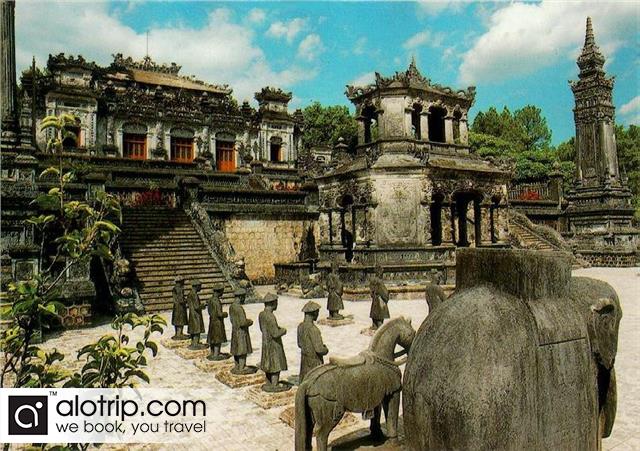
The Khai Dinh Tomb is the last of the imperial tombs in Vietnam. The tomb took 11 years to build and was completed in 1931. Despite being quite a recent addition, Khai Dinh Tomb is one of the most popular tombs in the area. The tomb was built into a steep hillside and consists of four terraces with stern mandarins, dragons, and elephants. As a result of spending some time in France, the emperors enthusiastically added some European motifs to his parting monument.
The tomb of Emperor Minh Mang is another of the more popular tombs in Hue. Unlike Emperor Khai Dinh’s tomb which took more than a decade to complete, this tomb was completed in only three years.
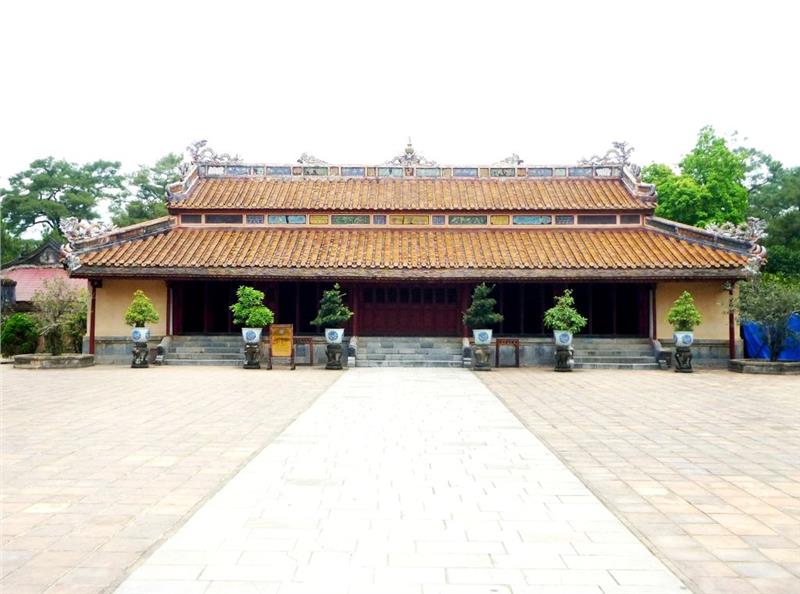
Emperor Minh Mang started construction of the tomb in September 1840 but passed away around four months later. The tomb is located 12 km from the city of Hue, in the Mount Cam Ke and the Perfume River West Shore. This imperial tomb is a reflection of the Chinese architectural concepts, recommended sightseeing by its monuments, statues, gardens and especially the bridge over a Lake of lotus flowers which gives access to the Imperial Minh Mang tomb.
The Thanh Tan Hot Springs is situated 13 kilometers north of the city center of Hue.

The Thanh Tan Hot Spring provides scenic surroundings of a mass of trees and hilly regions, and fresh mountainous air amidst flowing hot mineral water springs. Tourists can soak in the warm mineral water, see the mountain scenery, listen to the birds singing and also enjoy the foot massage. If you want to escape from hassle and bustle of the city, it is a perfect spot. Thanh Tan hot spring is well-known not only for the natural hot stream but also for Zipline and Highwire, a corporate product between Thanh Tan and Altus - French company whose expertise is in constructing adventurous games. For those who are in love with adventures, it is a must experience. You’ll be sliding down from the height of 45,5 m on Ma Yen hill to the ground. With the total length of 560m, this Zipline broke the Vietnam Record for the longest free hanging uninterrupted Zipline all over the country.
Thien Mu Pagoda
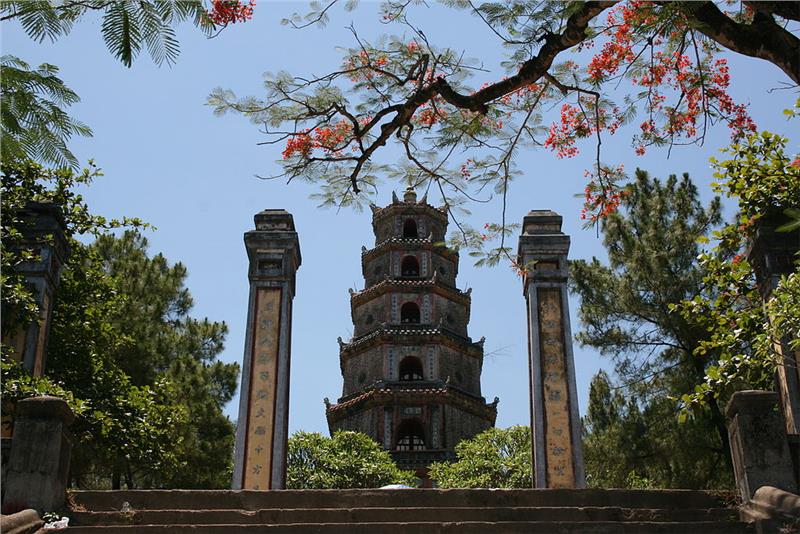
Overlooking the Perfume River on Ha Khe Hill, the seven-story Thien Mu Pagoda is the tallest religious building in Vietnam. The temple itself was established at the location in 1601, but the tower was later constructed in 1844. It is a Himayana Buddhist Temple which is a different form of Buddhism practiced by the Vietnamese; the temple is also known as the ‘Heavenly Lady Temple’. It was believed that a lady came from the sky to this hill and prophesized that a temple would be built here for the prosperity of the nation. There is also a monastery in the temple complex which is the home of 65 monks. There are also many apprentice monks here too. When they reach 18 years of age, they decide to pursue the life of monkhood or to re-enter the ‘normal’ world.
How Hue “tastes”?
Hue Beef Noodle (Bún bò Huế)
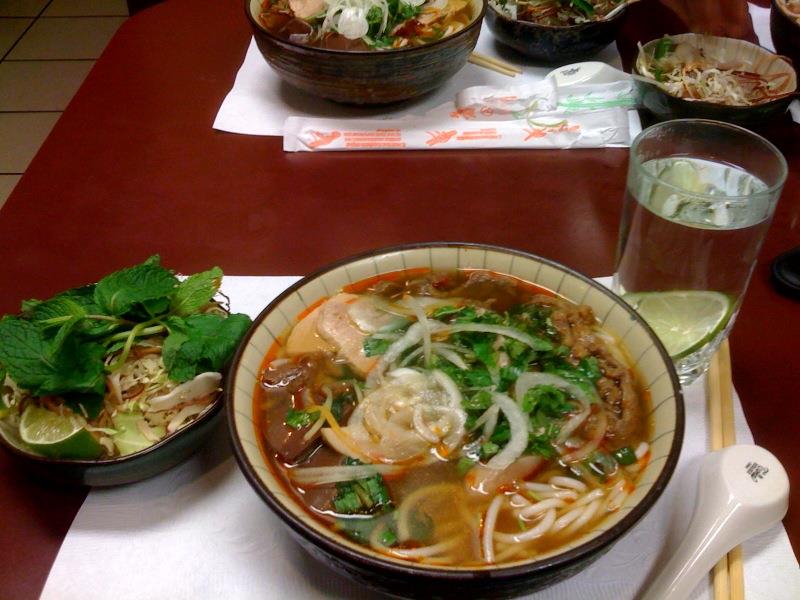
Bun Bo Hue's typical flavors are spicy, hot and in the essence of lemongrass. Bun Bo Hue is served with various veggies and herbs like bean sprouts, shredded banana flower, shredded cabbage, and lettuce. Unlike Pho with flat rice noodles, Hue beef noodle is made from round thick noodles.
Banh Khoai
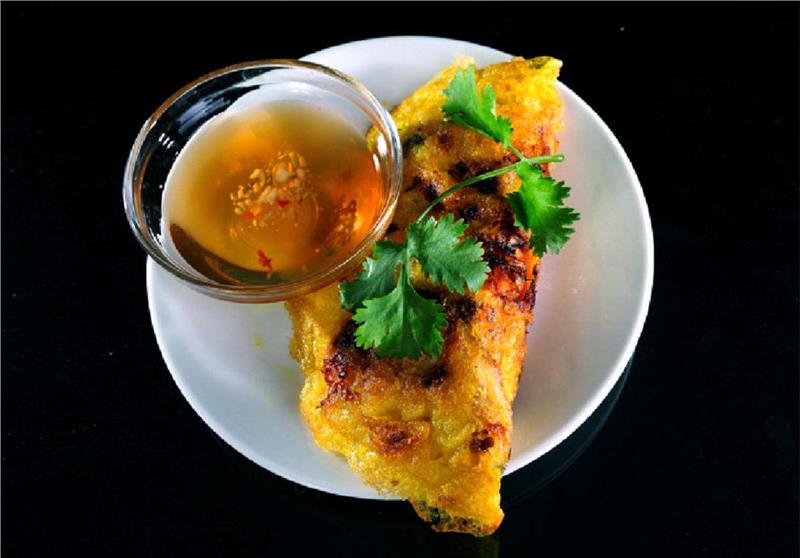
This crunchy rice flour crepe, made bright yellow with a healthy shake of turmeric and extra-crispy due to sugar and carbonated water in the batter, is a smaller, thicker version of the banh xeo you see in the southern part of Vietnam. Banh khoai and Banh xeo also are wrapped in a mustard leaf, lettuce leaves or rice paper, and stuffed with a variety of herb, like mint leaves, basil and served with a sweet and sour mixed sauce. In Hue, Banh khoai is placed open-face instead of being folded in half like Banh xeo.
Com Hen (rice with mussel) is a unique cuisine of Hue.
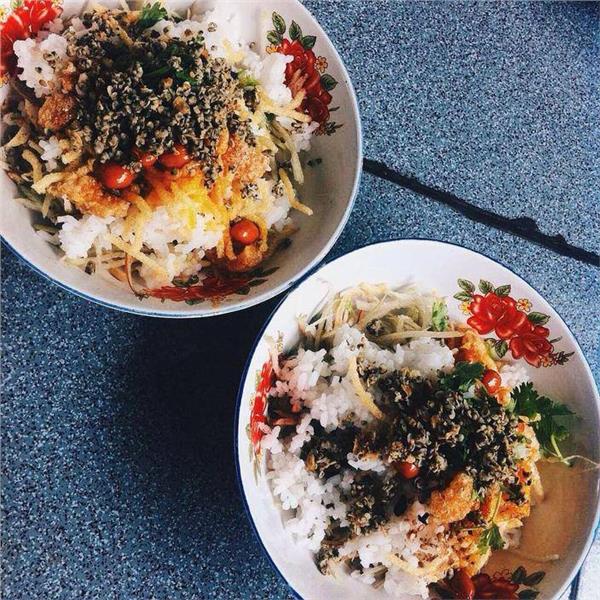
Com Hen contains rice, boiled mussel, star fruit, fish sauce, cabbage, onion, pepper, peanut, chili, and a variety of herbs. The specialty is all of these elements are cold.
Banh Loc Goi
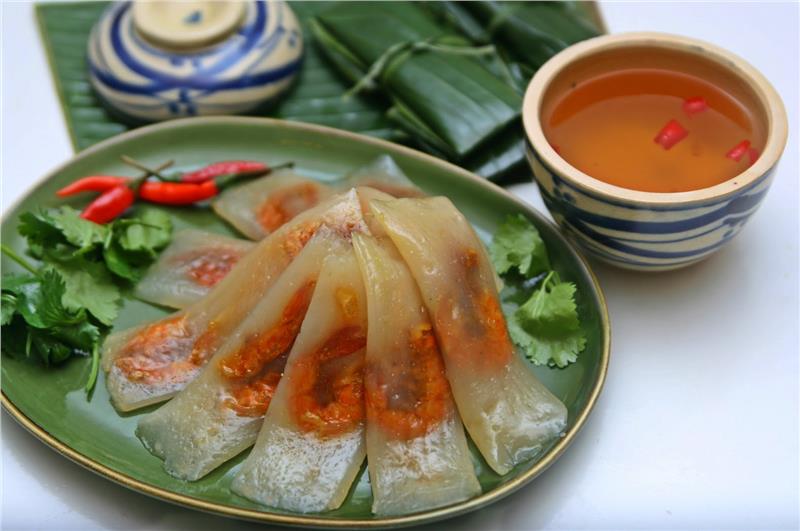
Banh loc is a typical Hue snack in which a tapioca flour-based dough is stuffed with caramelized shrimp and pork. This cake is covered in banana leaves.
Hue is a beautiful city, a little less hectic than Ho Chi Minh/Hanoi, but with enough going on. A walk along the perfume river (Huong Giang) is recommended. From there you can dive into the various markets and shops in the side streets. If you are starting off from Ho Chi Minh or Hanoi, booking a flight is recommended. Please use our search engine to find a suitable flight.
Popular airports in Hue
Phu Bai International Airport, Hue (HUI) - Vietnam
Popular airlines flying to Hue
Hong Kong Airlines -> 395 USD Shenzhen Airlines <-> 1,411 USD Thai Airways -> 274 USD Japan Airlines -> 1,265 USD Iberi <-> 7,642 USD Shanghai Airlines <-> 1,096 USD Turkish Airlines <-> 1,322 USD Delta Airlines -> 482 USD Air Canada -> 879 USD China Southern Airlines -> 560 USD All Nippon Airways <-> 655 USD Korean Air <-> 1,523 USD Air France <-> 1,154 USD Philippine Airlines -> 673 USD Eva Airways -> 747 USD Dragon Airlines -> 419 USD China Airlines -> 887 USD United Airlines <-> 934 USD Jetstar Airways -> 22 USD Qatar Airways -> 475 USD
Popular flights to Hue
Country City United States -> Hue 918 USD Austin, Washington, Houston, Las Vegas, Miami, Portland - Oregon Thailand -> Hue 166 USD Chiang Mai, Phuket Japan -> Hue 565 USD Hakodate, Morioka, Saga, Kochi, Kita Kyushu, Kumamoto, Okinawa Hong Kong -> Hue 133 USD Hongkong Cambodia -> Hue 196 USD Sihanoukville, Siem Reap Canada -> Hue 879 USD Toronto Lao, People's Dem. Rep. -> Hue 370 USD Savannakhet
